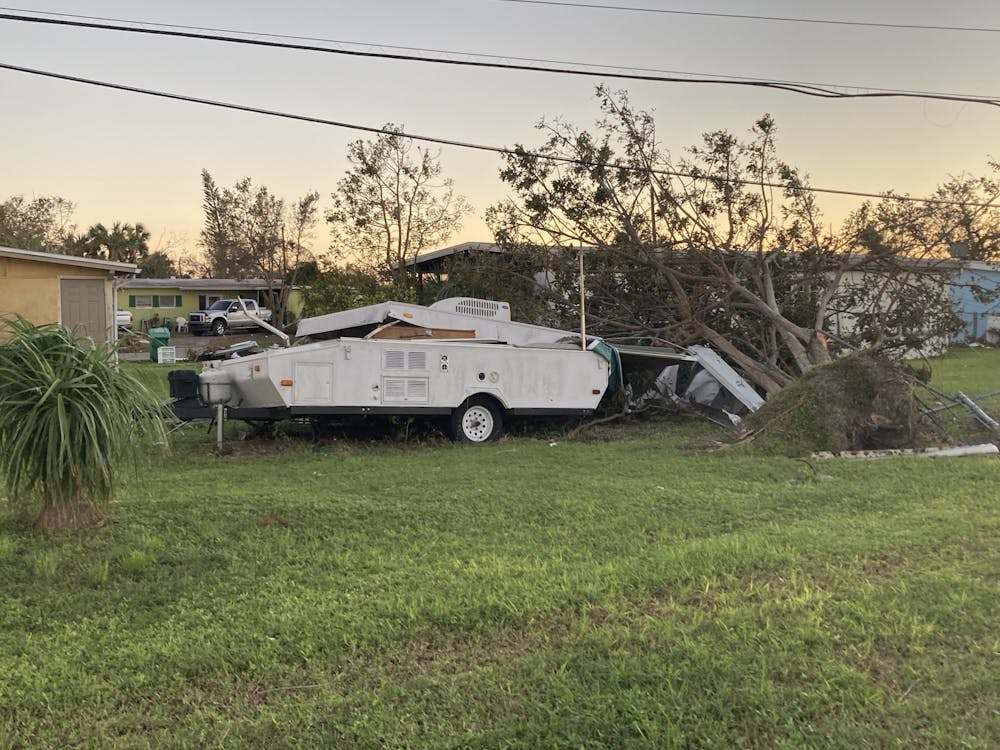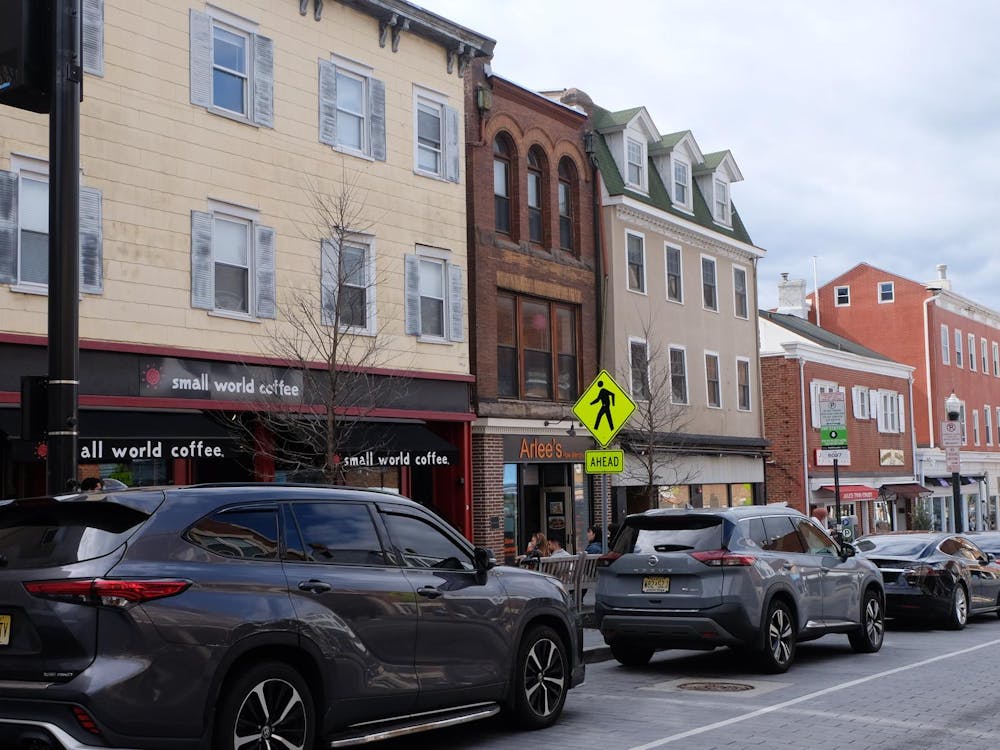On Sept. 28, Hurricane Ian made landfall on Florida’s southwest coast as a Category 4 storm, one of the strongest hurricanes to ever impact the United States — and with it, Princeton community members who live nearby. In Lee County, one of the counties most affected by the storm, the Princeton community is composed of mostly retired alums.
Paul Atkinson ’74, vice president of the Princeton Club of Southwest Florida (PCSWF), told The Daily Princetonian that he has close to 500 alumni members in the region and estimated that about half of them stayed in Florida for the storm, while others left Florida for their northern residences.
“80 percent of our members are 65 or older based upon their class,” Atkinson added.
Ian first made landfall in Cuba on Sept. 27 as a Category 3 storm, moving up to Florida as a Category 4, and made its final landfall in South Carolina as a Category 1.
As of Oct. 7, officials have reported more than 100 casualties as a result of the storm. Of that number, 89 were in Florida, including 45 in Lee County, which includes the cities of Fort Myers and Sanibel Island.
Another alumnus living in southwest Florida, Scott Crater ’91, commented on the importance of preparedness in these situations.
“The spin is that people didn’t have enough time to evacuate but that’s not really true,” Crater said. “If you live in the southeast [United States], you have to have a hurricane plan.”
On Sept. 27, the day before the storm made landfall in the state, Florida Gov. Ron DeSantis issued an evacuation order for 12 counties — placing 2.5 million people under an evacuation order. After Lee County experienced the largest number of fatalities, many pointed fingers at county officials, saying that officials did not adequately notify residents ahead of time. Lee County officials issued mandatory evacuations less than 24 hours before Hurricane Ian made landfall.

But not everyone had the ability to leave, as Crater pointed out.
“[T]he difficulty is that if you’re impoverished and don’t have a car — that’s a problem,” Crater added.
Crater, who works as a dermatologist in nearby Fort Myers and Cape Coral, lives on Sanibel Island — one of the hardest hit locations — where he sits on the five-member city council.
“We have an independent city with its own rule, and our goal is to preserve the island,” he told the ‘Prince’ in a phone interview. “We have no high rises, no chain restaurants.”

In a video Crater shared to Facebook, he bikes down Gulf Drive, where, he hypothesizes, the Sanibel Surfside Condominiums once stood. And he has to hypothesize — because “the amount of debris [is] hard to comprehend.”
“The debris is just everywhere — and all the contents — baby high chairs, bicycles, building materials made out of plastic,” he told the ‘Prince.’ “Plastic is gonna be there until we pick it all up or until it washes into the ocean.”
The United States saw more than 3.4 million power outages as a result of Ian, and around 2.7 million alone at the peak of outages in Florida — a quarter of the state. In Cuba, power failures caused the entire country of 11 million to experience outages.
“Every single piece of infrastructure is damaged and devastated,” Janice Block ’84, also a Sanibel Island resident, told the ‘Prince.’
Block was in France celebrating her birthday when she found out that Ian was heading for her home. The following days before returning to the United States were spent “totally focused” on Florida and the possible devastation may be coming.
“So many of our close friends had not evacuated before the hurricane — and we at that point did not know if they had survived,” Block told the ‘Prince.’
Block also serves as the communications director for her synagogue, Bat Yam Temple. On the plane back to the United States, she received an email from a producer for NBC Nightly News. To her surprise, from 35,000 feet, Block was the behind-the-scenes coordinator of a news segment which showcased the retrieval of two Sifrei Torah from the Bat Yam Temple just in time for Yom Kippur services. Hurricane Ian made landfall just after the end of Rosh Hashanah, the Jewish new year, meaning the community needed to move fast for Yom Kippur.
“We were able to arrange it — because it's so sacred — and we need the Torah,” Block said. She also shared the impacts of another recent event on her family, the July 4th shooting at a parade in Highland Park, Ill.
“We have another home in Highland Park, Illinois,” Block said. “What are the odds you experience a mass shooting at a Fourth of July parade and then your home gets destroyed by a hurricane — in a matter of months?”
Block was able to view “government aerial images” of her Sanibel neighborhood following the storm, showing her family’s home, which was significantly damaged by the hurricane.
Despite the devastation, University alumni are still finding ways to help rebuild their communities. The day the ‘Prince’ spoke with Block, she had just signed up to volunteer and help those affected by Hurricane Ian.
“I signed up to help with the re-entry forms to create equitable re-entry for homeowners and business owners,” Block explained. “The logistics of all of this — the enormity of it — is a lot for people to wrap their arms around.”
Eden Teshome is an Associate Podcast Editor at the ‘Prince.’ She can be reached at edenteshome@princeton.edu or on Twitter @edteshome.
Hope Perry is the Head Podcast Editor at the ‘Prince’ who has covered USG, US politics, and student activism. She can be reached at hperry@princeton.edu or on Twitter @hopemperry.








